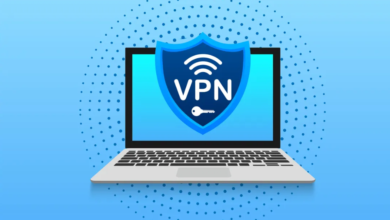
Safeguarding Your Smart Technology
In today’s hyper-connected world, smart technology has seamlessly integrated into our lives, transforming how we interact with our surroundings. From smart thermostats that learn our temperature preferences to voice-activated assistants that manage our schedules, these innovations offer unprecedented convenience and efficiency. However, as our reliance on smart devices grows, so does the importance of safeguarding them against potential threats. In this blog post, we’ll explore why securing your smart technology is crucial, the risks involved, and practical steps you can take to protect your digital life.
Understanding the Importance of Securing Smart Technology
Smart devices—encompassing everything from smartphones and wearables to home automation systems and connected appliances—are fundamentally reshaping our lives. They offer enhanced convenience, energy efficiency, and the ability to automate tasks that were once time-consuming. However, this interconnectedness comes with a caveat: each smart device is a potential entry point for cybercriminals. If not adequately secured, these devices can be exploited to steal personal information, disrupt services, or even gain control over other connected devices.
The Growing Landscape of Smart Technology
Smart technology isn’t confined to just one type of device. It spans various categories, including:
- Smart Home Devices: Thermostats, security cameras, smart locks, lighting systems, and more.
- Wearables: Smartwatches, fitness trackers, and other connected accessories.
- Connected Vehicles: Cars that communicate with other devices or infrastructure.
- IoT Devices in Business: Manufacturing sensors, smart meters, and other industrial applications.
As the Internet of Things (IoT) continues to expand, the number of connected devices is projected to exceed 30 billion by 2030. This vast network of devices, while offering incredible benefits, also presents an equally vast array of vulnerabilities.
Also Read
The Risks Associated with Smart Technology
The vulnerabilities of smart technology are often underestimated. The convenience of these devices can sometimes overshadow the risks they pose, including:
- Data Breaches: Many smart devices collect and store personal data. A breach could expose sensitive information such as your home address, health records, or even financial details.
- Device Hijacking: Hackers can take control of smart devices, such as cameras or microphones, to spy on users or disrupt services.
- Botnets: Infected smart devices can become part of a botnet, a network of compromised devices used to launch large-scale cyberattacks.
- Privacy Invasion: Many smart devices are always on and listening, which could potentially lead to unauthorized data collection and invasion of privacy.
Steps to Safeguard Your Smart Technology
Given the potential risks, it’s crucial to take proactive steps to secure your smart technology. Below are some practical strategies to protect your devices and, by extension, your personal information.
1. Secure Your Wi-Fi Network
Your home Wi-Fi network is the gateway through which your smart devices connect to the internet. If your network is compromised, so are your devices. Here’s how to secure it:
- Use a Strong Password: Avoid default passwords or easily guessable ones. Opt for a long, complex password that includes a mix of letters, numbers, and special characters.
- Enable WPA3 Encryption: Ensure your router uses WPA3, the latest and most secure Wi-Fi encryption standard.
- Set Up a Guest Network: Create a separate network for visitors. This keeps your main network secure while still allowing guests to access the internet.
2. Regularly Update Your Devices
Manufacturers often release firmware updates to fix security vulnerabilities. Regular updates ensure that your devices have the latest security patches.
- Enable Automatic Updates: If possible, set your devices to update automatically. This ensures you’re always protected against the latest threats.
- Check for Updates Manually: Some devices may not update automatically. Make it a habit to check for updates periodically.
3. Use Strong, Unique Passwords for Each Device
Using the same password across multiple devices increases your risk. If one device is compromised, others can be easily accessed.
- Use a Password Manager: A password manager can help you generate and store complex, unique passwords for each of your devices.
- Avoid Default Credentials: Always change the default login credentials of your devices, as these are often well-known and exploited by hackers.
4. Disable Unnecessary Features
Many smart devices come with a range of features that you might not need or use. These features, if left enabled, can create additional security vulnerabilities.
- Turn Off Unused Services: If you don’t need remote access, Bluetooth, or voice control, disable these features.
- Restrict Device Access: Limit who can access your smart devices and their associated apps.
5. Monitor Device Behavior
Keep an eye on your devices for any unusual activity, which could be a sign of a security breach.
- Set Up Alerts: Some devices and security systems allow you to set up alerts for unusual activity.
- Review Device Logs: Check the logs of your smart devices regularly to ensure there’s no unauthorized access.
6. Invest in a Smart Home Security System
Consider investing in a security system specifically designed to protect smart devices.
- Network Security Systems: Devices like firewalls, intrusion detection systems, and smart home security hubs can provide an additional layer of protection.
- Device-Specific Security: Some smart home systems offer security features tailored to individual devices, such as cameras or thermostats.
7. Educate Yourself and Others
Awareness is a critical component of security. The more you know about potential threats, the better equipped you are to prevent them.
- Stay Informed: Keep up with the latest news on smart technology and cybersecurity.
- Educate Family Members: Ensure that everyone in your household understands the importance of securing smart devices and follows best practices.
Smart technology offers incredible benefits, making our lives more convenient, efficient, and connected. However, as we embrace these advancements, it’s essential to recognize and mitigate the associated risks. By securing your devices, staying informed, and following best practices, you can enjoy the convenience of smart technology without compromising your security.
Safeguarding your smart technology is not just a one-time effort but an ongoing process. As new threats emerge, staying vigilant and proactive is key to protecting your digital life in this increasingly connected world.









